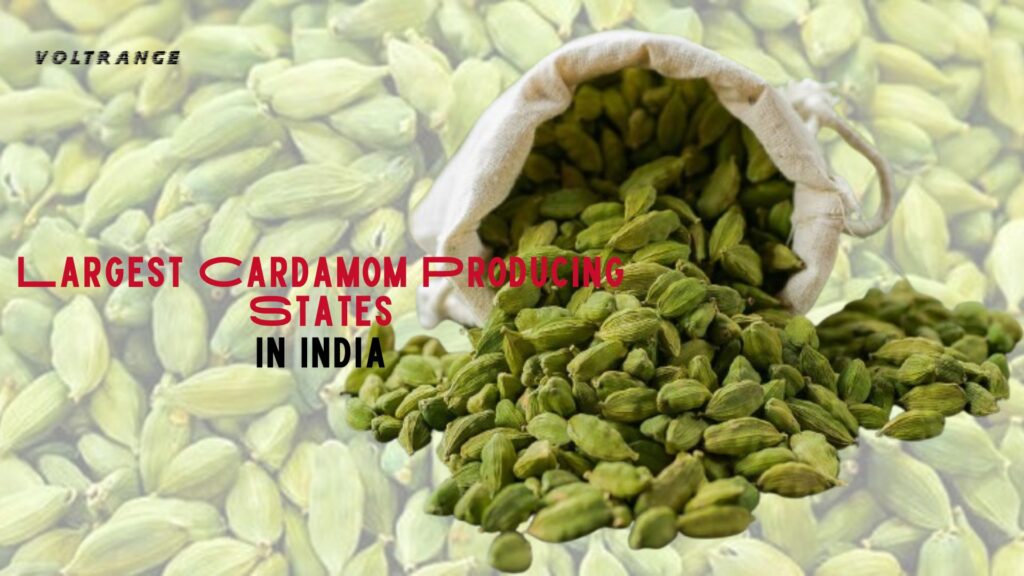
Largest Cardamom Producing States in India
Cardamom, known as ‘elaichi’ in India, has been cherished for centuries for its aromatic flavor and medicinal benefits. This spice is a staple in Indian kitchens, but it takes about 4-5 years to cultivate before it becomes a part of our daily cooking. The tropical climate of India, especially in areas with high rainfall, provides the perfect environment for cardamom cultivation, making the country a significant global producer. Many Indian farmers are deeply involved in its production, contributing to both local and international markets.
Let’s explore the top five states in India leading the way in cardamom production.
1. Kerala:
India has long been a hub for spices, and cardamom is no exception. Kerala, often referred to as the spice garden of India, ranks as the largest producer of cardamom in the country. According to data from the National Horticulture Board, Kerala produces an impressive 15,540 tonnes of cardamom annually, contributing to 58.6% of India’s total output. The state’s favorable climate, with temperatures ranging between 10-35 degrees Celsius, and ample rainfall make it ideal for cardamom cultivation. Beyond local markets, Kerala’s cardamom is also a major player in export, boosting the state’s and the nation’s economy.
2. Sikkim:
Sikkim, often called the ‘Land of Spices,’ holds the second position in India’s cardamom production, particularly known for large cardamom. The state has mastered several cultivation techniques, such as nurseries and micropropagation, which have helped boost its output. The loamy soil, coupled with the perfect pH levels, creates ideal growing conditions for cardamom. Sikkim accounts for 19.8% of India’s total cardamom production, making it a significant contributor to the industry.
3. Nagaland:
Nagaland has earned its place as one of India’s top cardamom producers through innovation and government-backed initiatives. Despite its smaller cultivation area compared to other states, Nagaland efficiently maximizes its yield, often outperforming larger regions. The rise of e-commerce and better market access has helped Nagaland secure the third position in the country’s cardamom production. The state’s commitment to modern farming techniques and effective policies has enabled it to become a key player in this spice sector.
4. Arunachal Pradesh:
Once known for opium cultivation, Arunachal Pradesh has transitioned to become a major producer of large cardamom. The state’s climate and soil conditions are ideal for this crop, and recent government efforts to encourage cardamom farming have been fruitful. Arunachal Pradesh has the potential to become one of the largest producers in India, thanks to increasing support from both the government and financial institutions, which are offering farmers resources to expand production.
5. Karnataka:
Karnataka, often referred to as the “land of spices,” is known for a wide range of crops, including bananas, coffee, and, of course, cardamom. The western ghats, with their fertile soil and monsoon climate, provide the perfect setting for cardamom cultivation. Karnataka contributes around 3.5% of India’s total cardamom production. Farmers in this region have leveraged the state’s natural advantages to grow high-quality cardamom, making it a key part of Karnataka’s agricultural output.
Conclusion:
India remains one of the leading producers of both small and large cardamom, with states like Kerala, Sikkim, and Nagaland driving the majority of production. The northeastern regions and the western ghats are particularly suited for this spice, thanks to their high rainfall and fertile soils. Government initiatives and collaborations with banks have empowered farmers with the knowledge and resources needed to boost cardamom production. As a result, India’s cardamom industry continues to grow, with promising prospects for the future.





More Stories
which of the following statements is true about education and lifetime earnings? Complete Guide Here
Statekaidz.com: Education with Fun For Kids 2025
Top 5 Richest States in India by GDP